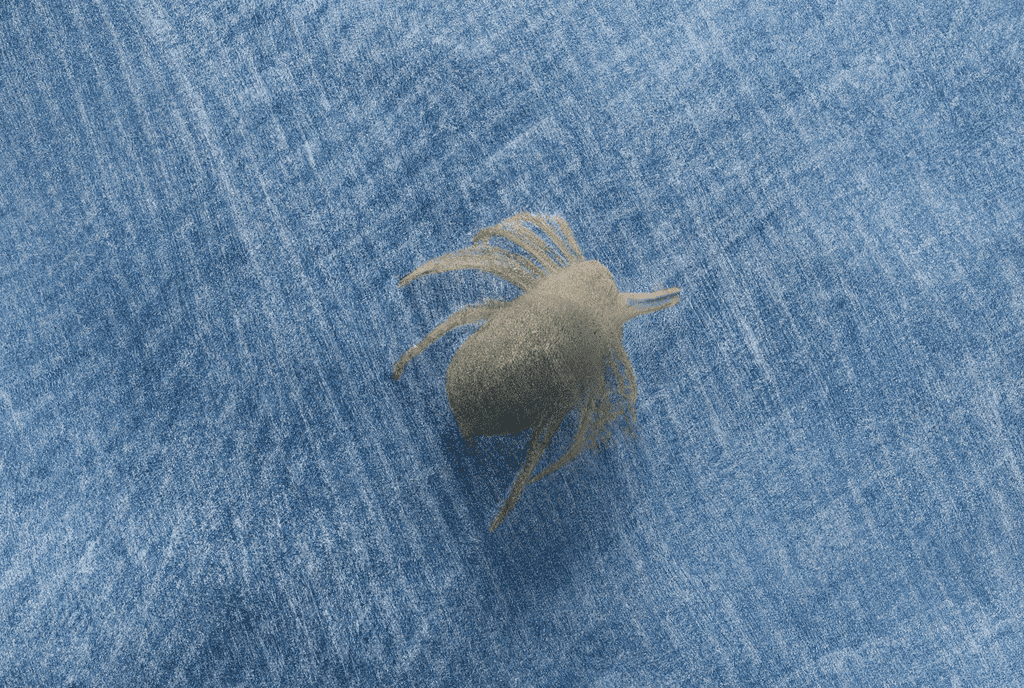Unless we can see the pests residing in and around our homes, it’s hard to detect their presence. Dust mites, in particular, are a common household guest, often flying under the radar due to their microscopic size.
Key Points:
- Dust mites are microscopic pests that thrive in warm, humid environments and feed on dead skin cells.
- Dust mites can cause allergy-like symptoms, especially in people with asthma, but not all individuals are allergic to them.
- Dry cleaning is an effective way to eradicate dust mites, as the high temperatures used in the process can kill them and their eggs.
But when allergies begin to flare, and a solution is necessary, you might determine dust mites are the cause.
So, how do you eliminate dust mites if you can’t see them? Will dry cleaning work? Dry cleaning can be an effective solution to dust mites, but a one-and-done clean doesn’t address the root problem.
What Are Dust Mites?

Dust mites are microscopic pests that reside indoors, thriving on dead skin cells and in warm, humid environments. They’re tiny, so they’re not visible to the naked eye, making it tough to pinpoint whether your home is infested.
As their name implies, they commonly live in house dust, skating under the radar. They eat skin cells shed by people in the house and often live in items like bedding, carpeting, and upholstered furniture (or other fabrics).
The most common types of dust mites in the United States are the North American dust mite (dermatophagoides farinae) and the European dust mite (dermatophagoides pteronyssinus).
How Do You Know If You Have Dust Mites?
Since dust mites are microscopic and invisible to the naked eye, detecting whether your home has them is tricky. Generally, the telltale sign of dust mites is the allergies that accompany them, often called dust mite allergies. Dust mite feces often trigger these allergies, especially in people with asthma.
However, not all individuals are allergic to dust mites, so some infestations may go completely undetected. If you suspect your home has an infestation of dust mites, you can purchase testing kits at some hardware stores, grocery stores, and online.
Some cases may demand a professional examination, which is always an option if you’re unsure whether your home has an infestation.
Will Dust Mites Make You Sick?
While dust mites don’t typically cause major sicknesses, they can present allergy-like symptoms. Common symptoms of dust mite exposure include:
- Runny or stuffy nose
- Red, itchy, or watery eyes
- Itchy nose, mouth, or throat
- Itchy skin
- Postnasal drip
- Sneezing
- Cough
For individuals with asthma, these symptoms may aggravate their asthma, creating a more serious situation. Symptoms for individuals with asthma may include:
- Audible wheezing sounds while exhaling
- Shortness of breath
- Chest pain
If you experience prolonged allergy-like symptoms or severe asthma symptoms, seek medical assistance immediately. Dust mites aren’t visible to the naked eye, so it’s possible the symptoms could stem from something more serious.
Will Dry Cleaning Kill Dust Mites?
Luckily, dry cleaning is an entirely effective way to eradicate dust mites. You can strip bedding, upholstery, clothing, and carpeting from your home and bring it in a bag to a professional dry cleaner for cleaning.
Dry cleaning involves incredibly high temperatures, as most dry cleaners use pressed heat or dry heat at temperatures of up to 220 degrees Fahrenheit. Since dust mites typically die at a temperature of around 130 degrees Fahrenheit, dry cleaning is an effective way to eradicate dust mite infestations.
It usually takes around 15 minutes of high heat to kill dust mites, so the prolonged heat exposure of dry cleaning is highly effective.
Dry cleaning bedding and similar thick items result in a 100% mortality rate of dust mites and their eggs, as the items are exposed to high heat for 24 hours or more. The mites cannot survive such high temperatures, and even if they survive them for a short time, prolonged heat is a sure way to eliminate them.
Regular Washing and Drying
While dry cleaning will do the trick, it can be an expensive solution to remedy the problem. So, if you’re looking for a more budget-friendly or DIY option to eliminate dust mite infestations in your bedding, clothing, or other items, you can wash and dry the items.
It’s important to note that regular washing with warm water and mild, dryer temperatures won’t kill the mites. In fact, a cool to warm wash provides a pleasant, humid environment for the dust mites, failing to kill them at all.
To start the process in your washer, you’ll need to wash the clothes, bedding, or other items in hot water that is at least 130 degrees Fahrenheit (about 55 degrees Celcius) with detergent. These temperatures kill around 97 percent of dust mites and their eggs, so while washing at high heat isn’t quite as effective as dry cleaning, it still offers impressive results.
Drying the items can also be an excellent way to eliminate remnants of dust mites after washing. You’ll need to dry the items on high heat, as temperatures must exceed 130 degrees Fahrenheit (about 55 degrees Celcius). The dryer removes any humidity left in the clothes, drastically reducing the dust mite survival rate.
If you have items that aren’t safe for high-heat drying, dry cleaning them is usually the best option for eliminating dust mites.
How To Keep Dust Mites At Bay

If you recently eliminated a dust mite problem, taking precautions to keep the pests at bay is essential. Here are a few tips to keep your home free of dust mites:
- Reduce humidity: Dust mites thrive in humid environments, so make your home less hospitable by keeping the humidity below 50%. If you live in an area with high humidity, dehumidifiers, and air conditioners can help.
- Limit carpeting: Dust mites thrive in the dark environment of carpeting, so limit the number of carpeted areas in your home. If you have carpets throughout your home or have a rental where you cannot remove them, use a vacuum with a HEPA (High-Efficiency Particulate) filter to vacuum the carpets thoroughly.
- Dust regularly: Keep dust stores at a minimum by dusting your home regularly. Dust mites thrive in household dust, so add dusting to your routine cleaning list. When dusting your home, use something that can trap and lock dust to ensure it doesn’t get stirred into the air as you work. Microfiber cloths or wet washcloths work well for this.
- Dry items on high heat: If your clothing, bedding, and other items can handle it, dry them regularly on high heat. The high temperatures in the dryer and prolonged heat create an inhospitable environment for the mites, so this can be a great way to keep them at bay.
- Reduce places where dust mites can live: Keep dust mite homes at a minimum. If you can, remove upholstered furniture and replace it with smooth-surfaced furniture. Cover pillows and mattresses with allergen encasements, and reduce clutter (stuffed animals, piles of laundry, blankets, etc.). If you can’t remove them, wash them in hot water and dry them on high heat weekly to kill dust mites.
Frequently Asked Questions (FAQs)
Does Putting Pillows in the Dryer Kill Dust Mites?
Putting your pillow in the dryer can help kill dust mites as long as the temperature is high enough for long enough. It takes a minimum temperature of 130 degrees Fahrenheit and about 15 minutes to eradicate dust mites, as they cannot survive high temperatures.


